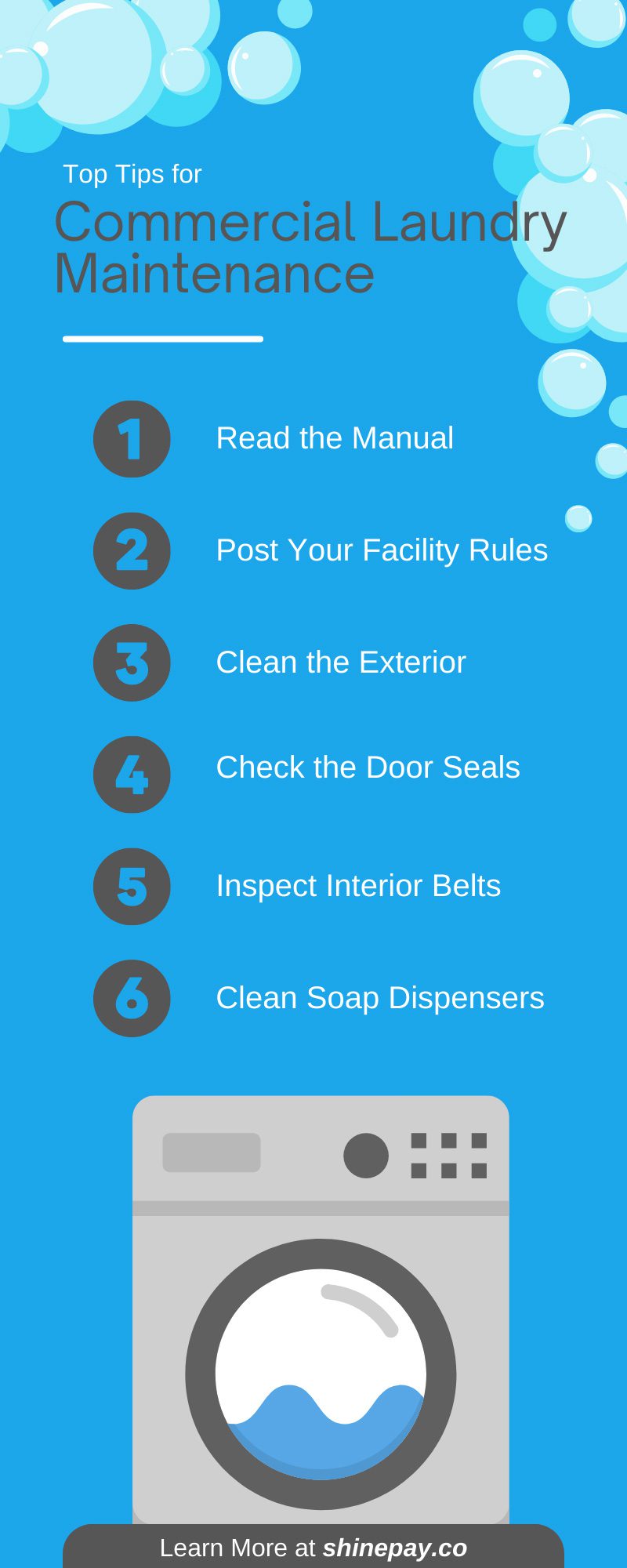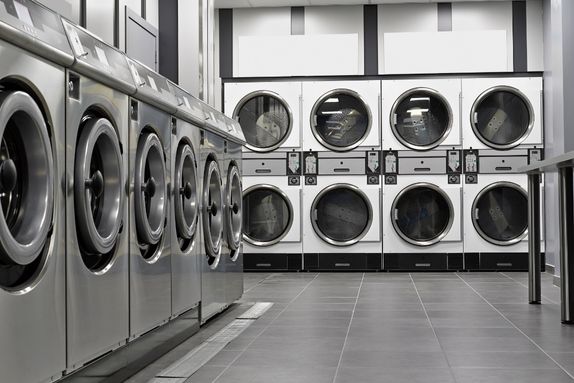When you own a laundromat or a tenant laundry room, keeping your machines in working order is vital for success. Without proper maintenance, your machines could cost you more money than you’re making. Eventually, you might even have to replace them, and commercial machines are expensive. Learn the top 10 tips for commercial laundry maintenance to keep overhead costs down.
1. Read the Manual
Any time you invest in a major piece of equipment for business, you should read the manual. For laundry machines, reading the manual can tell you the following:
- The water and power supply requirements
- Which cleaning products are safe to use
- What kinds of cycles your machine offers
- How often you should perform maintenance
- What kinds of parts you should have on hand
- How to diagnose problems with your machines
- What kind of warranty your machines have
- How to find licensed technicians for your machines
The manufacturer knows their machines better than anyone else, so take advantage of their advice. You already paid for it when you bought the machines!
2. Post Your Facility Rules
Laundry patrons aren’t always smart about how to do laundry. One example is overstuffing. When you overstuff a washing machine, there’s no way the machine can circulate water efficiently enough to clean every inch of the load. This leaves you with clothes that need to be washed again much sooner. The same can be said for dryers, which take much longer to dry effectively when you overfill them.
Furthermore, practices like overstuffing can wear out your machines much faster, meaning you end up paying for your patrons’ poor laundry skills. If you want to save you and your patrons some frustration, post your facility’s best practices in a place that’s easy to see.
3. Clean the Exterior
Cleaning the exterior of your machines keeps them and your facility looking nice. By keeping your machines free from lint, dust, and spills, you create an enticing environment for customers. After all, who wants to do cleaning in a dirty place?
Plus, if the machines are clean, people will be more likely to notice and clean up after themselves if they spill detergent. On the other hand, if your machines are dirty, it can be hard for clients to tell which part of the mess they’re responsible for. Here’s a pro tip: if you want people to clean up their messes, provide a roll of paper towels for them to do so.
4. Check the Door Seals
Over time, detergent residue will build up around the door seals of your machines. When this happens, the residue can get in the way of the door sealing properly, leading to leaks. To prevent leaks, you should clean the door seals every so often, scrubbing inside all the rubber flaps. After rinsing off the cleaner, feel the rubber seals for any remaining residue. If they’re smooth, you’re good to go.
Mold is another problem that can cause machines to smell and doors to not seal properly. One thing you can do to avoid mold is make sure people leave the doors of your washing machines open when not in use. This lets the machines air out, lowering the chance of mold. However, you should still use a diluted bleach cleaner every now and then to wipe down the seals and remove any developing mold spores.
5. Inspect Interior Belts
Knowing when to expect certain problems with your machines can help you better prepare for commercial laundry maintenance. For example, if you know that motor belts on commercial laundry machines need replacing about twice a year, you can be sure to have some on hand. Otherwise, you’re machine will be out of operation until you can make the repair, which cuts down on the money you can make.
6. Clean Soap Dispensers
Despite containing soap, soap dispensers are one of the dirtiest places on most laundry machines. That’s because they contain layers and layers of detergent residue, which sticks to the sides of the dispensers.
If you don’t want mold growing in dispensers and contaminating the soap, you should clean them every night by rinsing and wiping them out with a clean cloth. If you can’t remove the dispenser, you can use a cheap toothbrush to reach inside.
7. Check the Lint Filters
Laundry patrons aren’t always good about changing out the lint filters in other people’s machines. For one thing, it’s just faster to skip this step. However, as the owner of the facility, you should be concerned about lint building up because it’s a fire hazard. Lint is an extremely combustible material, and the air inside your dryers is very hot. If there’s a buildup of heat and friction, the lint can ignite, causing a fire.
8. Watch Out for Leaks
Every so often, you should take a look at the inlet and outlet hoses of your machines. These hoses feed water into and out of the washing machine, and if they leak, you could see a huge spike in your utility bills. Over time, these hoses can get sediment buildup from mineral deposits in the water. With enough time, the sediment can cause the hoses to leak.
9. Know How To Manage Repairs
When your livelihood depends on working machinery, it helps if you can do some repairs yourself. Besides routine cleaning, learn to make basic repairs like changing out belts and filters on your own. Doing the repairs yourself means you don’t have to wait on a repair person or pay for their labor.
However, unless you’re an experienced laundry machine technician, you won’t be able to do all the repairs at your business on your own. When it’s time to call in an expert, make sure you have the name and number of a trustworthy repair service on hand. If you don’t know anyone, start asking around now to save valuable time later.
10. Cut Costs With Contactless Payments
If the maintenance costs at your facility are racking up, one thing you can do to save money is switch to ShinePay’s credit card laundry machines. Our machines come equipped with a contactless payment system, and all the transaction information goes right to your manager dashboard.
If your machines already accept coin or card payments, that’s OK! You can still update them with ShinePay to start accepting mobile payments. Track everything from user statistics to refunds in our intuitive dashboard. Contact us today to learn more!

